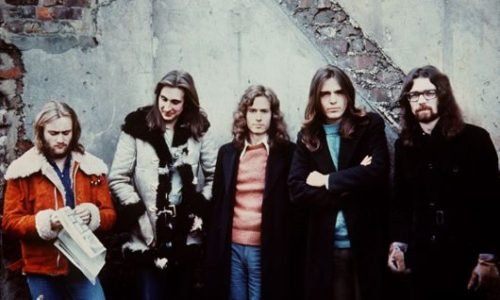Genesis, formed in 1967, began their journey as a band with a blend of progressive rock and pop sensibilities. The original lineup featured Peter Gabriel, Tony Banks, Mike Rutherford, Anthony Phillips, and Chris Stewart. As they evolved through the late 1960s and early 1970s, Genesis experienced several lineup changes and a significant shift in their musical direction.
The band’s early albums, including Trespass (1970) and Nursery Cryme (1971), laid the groundwork for their progressive rock style, characterized by complex compositions and theatrical elements. With the addition of guitarist Steve Hackett and drummer Phil Collins, Genesis began to hone their distinctive sound. Foxtrot (1972) and Selling England by the Pound (1973) solidified their reputation as pioneers of the progressive rock genre, featuring intricate arrangements, extended instrumental passages, and Peter Gabriel’s distinctive, often surreal, lyrical narratives.
By the mid-1970s, Genesis was ready to embark on their most ambitious project yet. The Lamb Lies Down on Broadway, released in 1974, marked a significant departure from their previous work. This double album was a sprawling concept piece that told the surreal and fragmented story of Rael, a Puerto Rican youth navigating a fantastical and often disturbing journey through New York City.
The album represented a culmination of Genesis’ artistic ambitions and showcased their willingness to push the boundaries of the rock genre. It was a bold, experimental endeavor that required the band to stretch their creative limits. The project was also notable for being the last studio album featuring Peter Gabriel as the lead vocalist before his departure from the band in 1975, adding an additional layer of significance to its place in Genesis’ discography.
Concept and Narrative
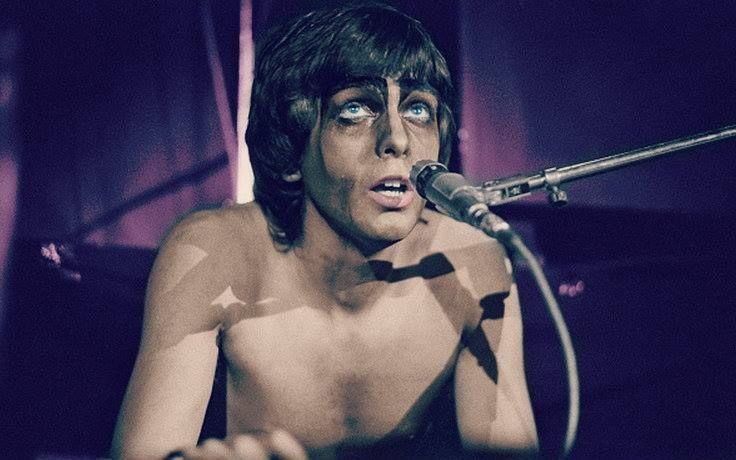
The Lamb Lies Down on Broadway is a concept album that weaves a complex and surreal narrative centered on the main character, Rael, a Puerto Rican youth from New York City. Rael’s journey is both physical and metaphysical, as he navigates a series of bizarre and often disturbing experiences that challenge his identity and perceptions of reality.
The Storyline
The album opens with Rael emerging from the subway onto Broadway, where he witnesses a lamb lying down in the middle of the street. This peculiar event sets off a chain of surreal adventures. As Rael tries to make sense of his surroundings, he finds himself caught between the familiar urban landscape of New York City and a series of increasingly strange and fantastical scenarios.
Throughout the album, Rael’s journey takes him through various trials and tribulations. He encounters a range of symbolic characters and settings, including the sinister Slippermen, the hypnotic Lamia, and the enigmatic Colony of Slippermen. Each encounter forces Rael to confront aspects of his own psyche and personal history, blurring the lines between reality and illusion.
The Main Character: Rael
Rael is a complex character, embodying themes of alienation, self-discovery, and transformation. His Hispanic background and tough street persona contrast sharply with the surreal, often mythological elements of his journey. This dichotomy underscores his internal struggle and search for identity. Rael’s experiences can be interpreted as a metaphor for a deeper, spiritual quest, reflecting Peter Gabriel’s interest in Jungian psychology and the human subconscious.
Themes Explored
The album delves into several profound themes:
Identity and Transformation: Rael’s journey is a metaphor for personal growth and transformation. As he faces various trials, he sheds layers of his old self, emerging as a more self-aware individual.
Reality vs. Illusion: The blurred line between reality and fantasy in Rael’s journey challenges the listener to question the nature of reality and perception.
Alienation and Belonging: Rael’s experiences reflect feelings of alienation and the search for belonging, both in his physical environment and within his own mind.
Redemption and Sacrifice: The narrative explores themes of redemption and the sacrifices required for personal salvation and enlightenment.
Narrative Structure
The Lamb Lies Down on Broadway is structured as a double album, with each side advancing the story through a series of interconnected songs. The narrative unfolds as follows:
Side One: The album begins with the title track, setting the stage for Rael’s adventure. Songs like “Fly on a Windshield” and “Cuckoo Cocoon” introduce the surreal world Rael enters. “In the Cage” depicts Rael’s feeling of entrapment and his struggle to escape.
Side Two: Rael’s journey continues with encounters that challenge his resolve and understanding. “The Grand Parade of Lifeless Packaging” and “Back in N.Y.C.” highlight his confrontation with consumerism and identity. “The Carpet Crawlers” hints at a collective search for meaning and truth.
Side Three: This side delves deeper into Rael’s subconscious with tracks like “Lilywhite Lilith” and “The Waiting Room,” presenting more abstract and symbolic challenges. “Anyway” and “Here Comes the Supernatural Anaesthetist” further blur the lines between life, death, and dreams.
Side Four: The final side brings the narrative to its climax. “The Colony of Slippermen” and “Ravine” depict Rael’s ultimate trials. The album concludes with “It,” a cryptic and ambiguous ending that leaves Rael—and the listener—pondering the nature of existence and self.
Through its intricate storyline, The Lamb Lies Down on Broadway remains a profound and enigmatic work, inviting listeners to embark on their own journey of interpretation and discovery.
Songwriting and Composition

Collaborative Process
The creation of The Lamb Lies Down on Broadway was a highly collaborative effort among the members of Genesis, each contributing their unique talents to shape the album’s intricate soundscapes. Peter Gabriel, the band’s charismatic frontman, was the primary architect of the album’s storyline and lyrics. His narrative vision drove the conceptual framework, while his emotive and theatrical vocal delivery brought the character of Rael to life.
Tony Banks, the band’s keyboardist, played a crucial role in crafting the album’s complex musical arrangements. His use of synthesizers, Mellotron, and piano added rich layers of texture and atmosphere. Guitarist Steve Hackett contributed distinctive guitar lines and innovative sounds, enhancing the album’s otherworldly feel. Mike Rutherford, on bass and guitar, provided the foundational grooves and melodic counterpoints that anchored the compositions.
Phil Collins, the drummer and future frontman, was instrumental in creating the dynamic rhythmic structures that propelled the album forward. His versatile drumming and percussive creativity added depth and energy to the band’s sound. The collaborative synergy among these talented musicians allowed Genesis to explore new sonic territories and push the boundaries of progressive rock.
Notable Tracks and Their Significance
Several tracks on The Lamb Lies Down on Broadway stand out for their significance within the album’s narrative and their musical innovation:
“The Lamb Lies Down on Broadway”: The opening track sets the stage for Rael’s journey, with its driving piano riff and anthemic chorus. It introduces listeners to the protagonist and the bustling backdrop of New York City.
“In the Cage”: This song captures Rael’s sense of entrapment and desperation. Its intricate keyboard work and shifting time signatures exemplify the band’s progressive rock prowess. The intense, claustrophobic atmosphere mirrors Rael’s inner turmoil.
“The Carpet Crawlers”: One of the album’s most memorable tracks, this song features a haunting melody and reflective lyrics. It explores themes of longing and the search for enlightenment, with a dreamy, ethereal soundscape.
“The Chamber of 32 Doors”: This track delves into Rael’s quest for identity and belonging. The evocative lyrics and emotionally charged music convey his feelings of confusion and isolation.
“The Colony of Slippermen”: A multi-part epic, this song depicts one of Rael’s most bizarre encounters. The shifting musical styles and surreal lyrics highlight the album’s experimental nature and thematic complexity.
“It”: The closing track leaves the album on an ambiguous note, with a powerful and enigmatic message. Its upbeat tempo and driving rhythm provide a stark contrast to the introspective journey that precedes it.
Musical Styles and Influences
The Lamb Lies Down on Broadway showcases a wide range of musical styles and influences, reflecting the band’s eclectic approach to songwriting and composition. Progressive rock is the album’s primary foundation, characterized by complex time signatures, extended instrumental passages, and elaborate arrangements.
The album also incorporates elements of rock, pop, and classical music. The use of synthesizers and electronic effects, particularly by Tony Banks, adds a futuristic and sometimes surreal quality to the sound. Steve Hackett’s innovative guitar work blends traditional rock techniques with experimental sounds, contributing to the album’s unique sonic identity.
Jazz and funk influences are evident in Phil Collins’ drumming, which adds rhythmic diversity and a sense of groove. The band’s ability to seamlessly integrate these varied styles into a cohesive narrative experience is a testament to their musical versatility and creativity.
Recording Process
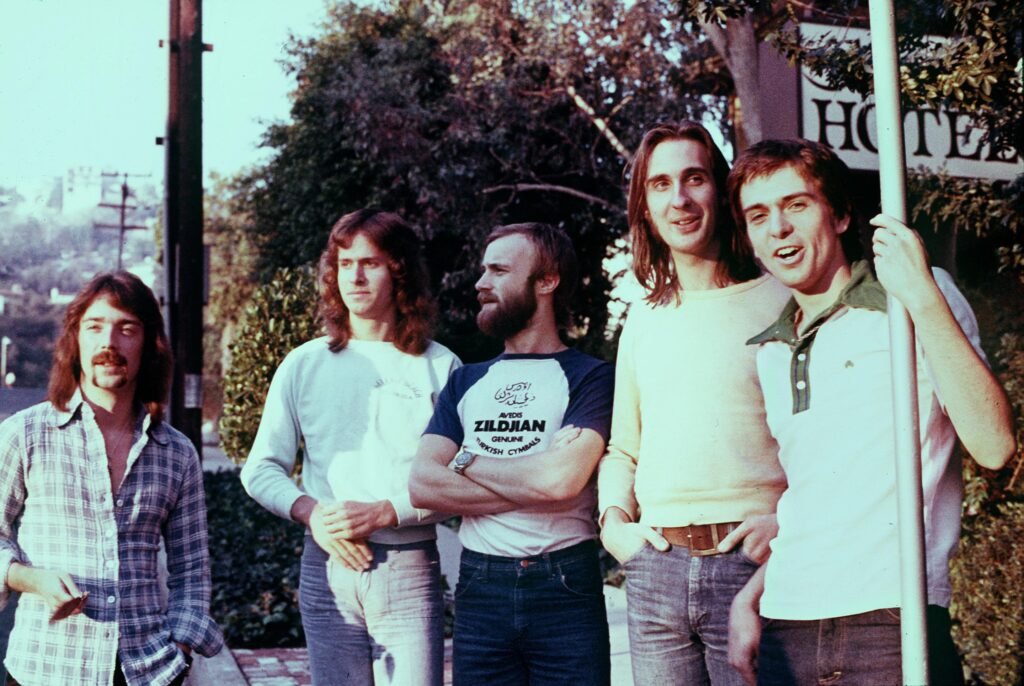
Locations and Studios
The Lamb Lies Down on Broadway was recorded during the summer and autumn of 1974 at the famous Island Studios in London, known for its state-of-the-art equipment and acoustics. Additionally, some sessions took place at the equally renowned Headley Grange, a country house in Hampshire that had previously hosted recording sessions for bands like Led Zeppelin. These settings provided Genesis with the ideal environments to experiment and refine their ambitious concept album.
Techniques and Equipment
The recording sessions for The Lamb Lies Down on Broadway utilized a combination of advanced recording techniques and cutting-edge equipment for the era. The band took full advantage of the 24-track tape machines available at Island Studios, allowing for extensive multi-tracking and layering of sounds.
Tony Banks, the band’s keyboard wizard, employed a range of instruments to achieve the album’s lush and varied textures. He used the ARP Pro-Soloist synthesizer for its distinctive leads, the Mellotron for its orchestral effects, and the RMI Electra Piano for its unique timbre. Banks’ ability to blend these keyboards created the album’s signature soundscapes.
Steve Hackett’s guitar work also benefited from innovative techniques and effects. He utilized the EMS Synthi Hi-Fli, an early guitar synthesizer, to produce unusual sounds that contributed to the album’s otherworldly feel. Additionally, Hackett’s use of tapping and sweep-picking techniques added a layer of complexity to his playing.
Phil Collins’ drumming was recorded with a focus on achieving a powerful and dynamic sound. The use of gated reverb, a technique that would become more prominent in Collins’ later work, helped to create the punchy and distinctive drum tones heard on the album. Microphone placement and room acoustics were meticulously adjusted to capture the full impact of Collins’ versatile drumming.
Challenges Faced and Overcome
The recording process for The Lamb Lies Down on Broadway was not without its challenges. One of the primary difficulties stemmed from Peter Gabriel’s deep involvement in the narrative and lyrical development, which occasionally caused friction within the band. Gabriel’s focus on the storyline sometimes led to delays, as he needed more time to perfect the lyrics and vocal parts.
To address these issues, the band adopted a more segmented approach to recording. Instrumental tracks were often laid down first, allowing Gabriel to work on his lyrics and vocal arrangements separately. This method helped to keep the recording sessions on track while allowing Gabriel the creative freedom he needed.
Another challenge was the sheer complexity of the material. The ambitious scope of the album required the band to push their technical and creative limits. Balancing the intricate arrangements with the cohesive storytelling demanded careful planning and execution. To manage this, the band often worked in smaller groups, focusing on specific sections of the album before bringing everything together.
Technical issues also arose, such as equipment malfunctions and the need for precise synchronization of the various layered tracks. The engineering team at Island Studios played a crucial role in troubleshooting these problems, ensuring that the recording quality met the band’s high standards.
Reception and Legacy
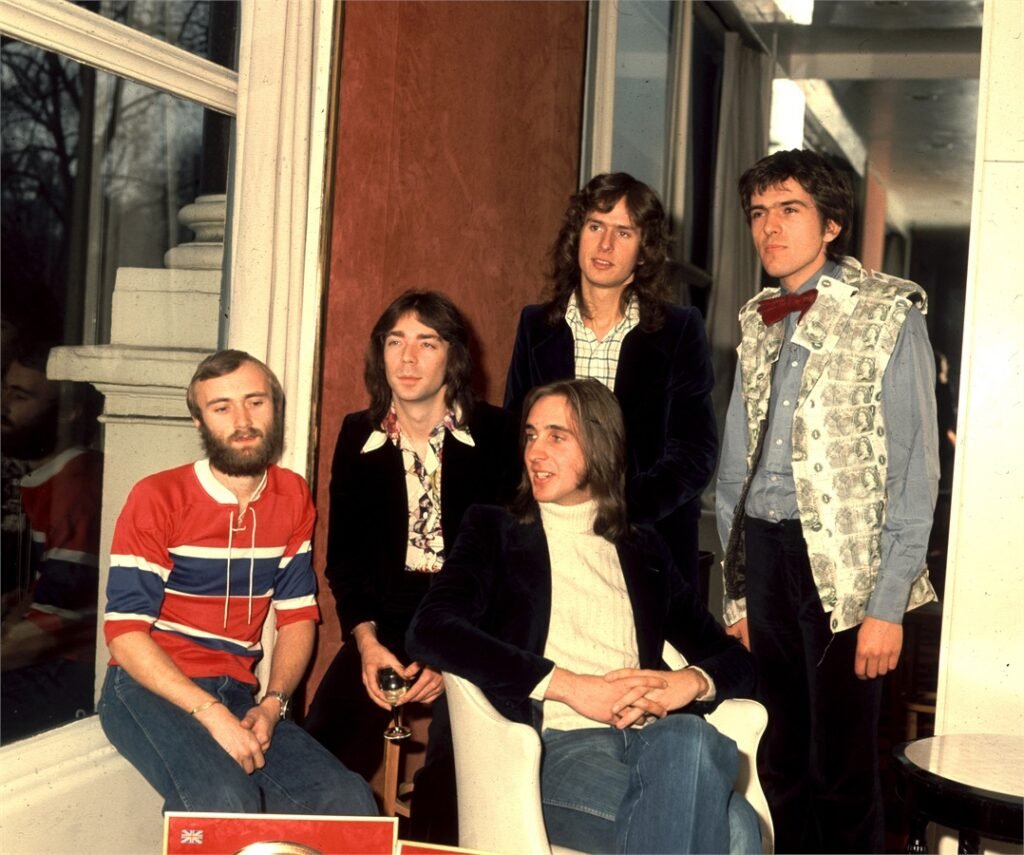
Initial Critical and Commercial Reception
Upon its release in November 1974, The Lamb Lies Down on Broadway received a mixed critical reception. While some reviewers praised its ambition and scope, others found the album’s complex narrative and sprawling length challenging to digest. Critics acknowledged the band’s musical prowess, particularly noting the intricate compositions and the emotive power of Peter Gabriel’s vocal performances. However, the dense and surreal storyline left some listeners bewildered, leading to divided opinions.
Commercially, the album performed reasonably well, reaching No. 10 on the UK Albums Chart and No. 41 on the US Billboard 200. It was a modest success compared to previous Genesis albums, but it still managed to attract a dedicated fanbase that appreciated its artistic boldness. The accompanying tour, featuring elaborate stage setups and Gabriel’s theatrical performances, helped to boost the album’s visibility and solidify its place in the progressive rock canon.
Long-Term Impact on Genesis’ Career and the Progressive Rock Genre
The Lamb Lies Down on Broadway marked a pivotal moment in Genesis’ career. It was the last studio album to feature Peter Gabriel as the lead vocalist, as he departed the band in 1975 to pursue a solo career. Gabriel’s departure could have spelled the end for Genesis, but instead, it led to a significant transformation. Phil Collins stepped up as the new frontman, and the band shifted towards a more accessible, pop-oriented sound in the subsequent years. This evolution allowed Genesis to reach new heights of commercial success, becoming one of the most successful bands of the 1980s.
For the progressive rock genre, The Lamb Lies Down on Broadway remains a landmark achievement. It epitomizes the genre’s peak in the mid-1970s, showcasing the experimental and boundary-pushing ethos that defined progressive rock. The album’s intricate compositions, thematic depth, and ambitious scope set a high bar for concept albums, influencing countless artists in the years that followed. Its blending of rock, classical, and electronic elements also helped to expand the sonic possibilities within the genre.
Contemporary View by Critics and Fans
Today, The Lamb Lies Down on Broadway is widely regarded as a masterpiece of progressive rock and a seminal work in Genesis’ discography. Critics and fans alike have come to appreciate its complexity and the innovative spirit that drove its creation. Retrospective reviews often highlight the album’s cohesive narrative, the band’s technical virtuosity, and Gabriel’s compelling performance as Rael.
The album has been reissued multiple times, each release garnering renewed interest and acclaim. Modern listeners and critics often view it as a daring artistic statement that stands the test of time. Its influence can be seen in the works of numerous contemporary progressive and experimental artists who draw inspiration from its ambitious scope and narrative depth.
Fans continue to celebrate the album through various means, including tribute performances and dedicated online communities that dissect its themes and musical intricacies. The live performances from the original tour, documented in various recordings and videos, are also cherished for their theatricality and the immersive experience they provided.
Live Performances
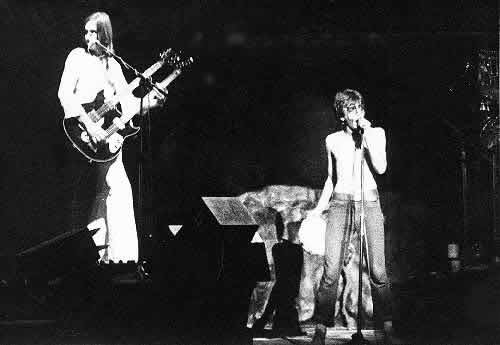
Description of the Tour
The tour supporting The Lamb Lies Down on Broadway was an ambitious and theatrical endeavor that took place from November 1974 to May 1975. Genesis embarked on a series of performances across North America and Europe, bringing their concept album to life on stage in a way that had never been attempted before. The tour consisted of over 100 shows, each designed to offer audiences a complete and immersive experience of the album’s complex narrative.
Translation into a Live Setting
Translating The Lamb Lies Down on Broadway into a live setting required meticulous planning and innovative stage design. The band performed the entire double album in sequence, ensuring that the storyline and musical progression were faithfully conveyed.
The stage setup featured a variety of visual and theatrical elements that enhanced the narrative:
Visual Projections: A large screen behind the band displayed a series of slides and films created by artist Jeffrey Shaw. These visuals provided context for the album’s storyline, depicting scenes from Rael’s journey and adding a dynamic visual element to the performance.
Costumes and Props: Peter Gabriel’s theatrical flair was a central feature of the live shows. He donned multiple costumes to represent different characters from the album, including Rael, the Slipperman, and others. These costumes helped to differentiate the various personas and scenarios that Rael encounters.
Stage Design: The stage was designed to accommodate the visual projections and Gabriel’s frequent costume changes. Minimalist in nature, the setup allowed the focus to remain on the narrative and the band’s performance.
Lighting: Innovative lighting techniques were employed to create mood and atmosphere, enhancing the dramatic impact of the story. The lighting changed to reflect the different scenes and emotions of the album, further immersing the audience in Rael’s journey.
Reception and Notable Incidents
The live performances of The Lamb Lies Down on Broadway were met with a range of reactions. Fans and critics praised the band’s musical execution and the ambitious nature of the show. The seamless integration of music, visuals, and performance art was hailed as a groundbreaking achievement in rock theater. However, some attendees found the abstract narrative and elaborate staging challenging to follow, mirroring the album’s initial mixed reception.
Several notable incidents occurred during the tour:
Technical Difficulties: The reliance on complex visual projections and costume changes occasionally led to technical difficulties. For instance, malfunctioning equipment sometimes disrupted the flow of the performance, though the band adeptly managed these hiccups.
Gabriel’s Departure: Peter Gabriel’s impending departure from Genesis added an emotional layer to the tour. Tensions within the band were palpable, but they remained professional and delivered powerful performances. Gabriel’s final show with Genesis, on May 22, 1975, at the Palais des Sports in Besançon, France, was particularly poignant for both the band and the fans.
Critical Acclaim: Despite the mixed reactions, many shows were met with critical acclaim, especially for the innovative use of multimedia and Gabriel’s charismatic stage presence. The tour helped to solidify Genesis’ reputation as a leading progressive rock band capable of pushing the boundaries of live performance.
Closing Thoughts
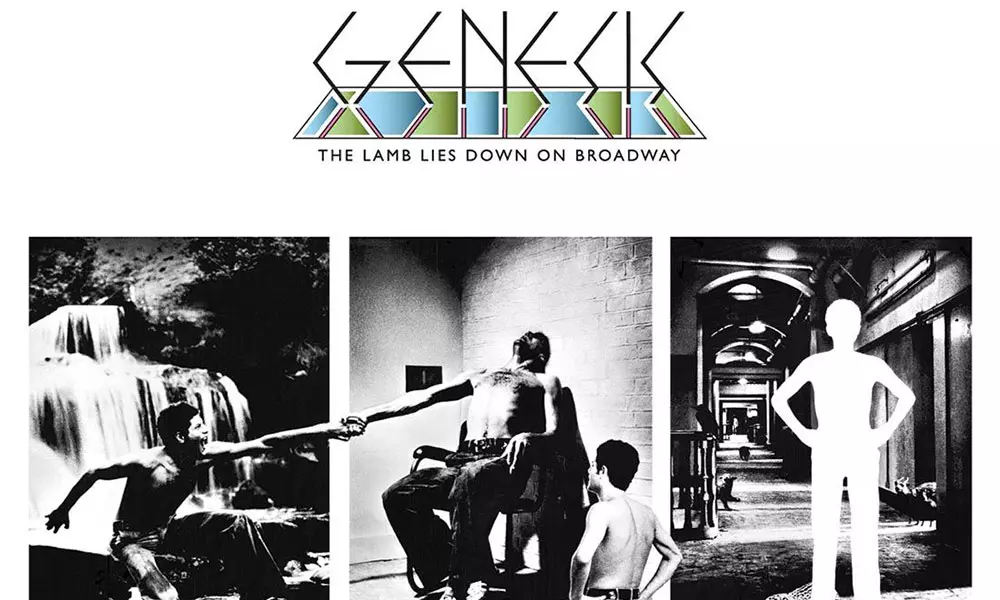
The Lamb Lies Down on Broadway stands as a monumental achievement in Genesis’ storied career, marking a crucial turning point in their musical evolution. As the last studio album featuring Peter Gabriel as the lead vocalist, it encapsulates the peak of the band’s progressive rock experimentation. The album’s ambitious narrative and complex compositions showcased Genesis’ artistic vision and technical prowess, setting a high standard for concept albums in the rock genre.
The importance of The Lamb Lies Down on Broadway in Genesis’ history cannot be overstated. It was a project that pushed the band to their creative limits, blending intricate musicianship with a deep, multifaceted storyline. This double album not only highlighted each member’s individual talents but also their ability to work cohesively as a unit to bring a grand artistic vision to life. The success of this endeavor demonstrated Genesis’ potential for innovation and set the stage for their future transformation and continued success.
The enduring legacy of The Lamb Lies Down on Broadway lies in its lasting impact on both fans and musicians alike. Decades after its release, it remains a touchstone for progressive rock, celebrated for its boldness and originality. The album’s intricate narrative, richly layered music, and theatrical elements continue to inspire new generations of artists and listeners. Its themes of identity, transformation, and the blurred lines between reality and illusion resonate as powerfully today as they did in 1974.
